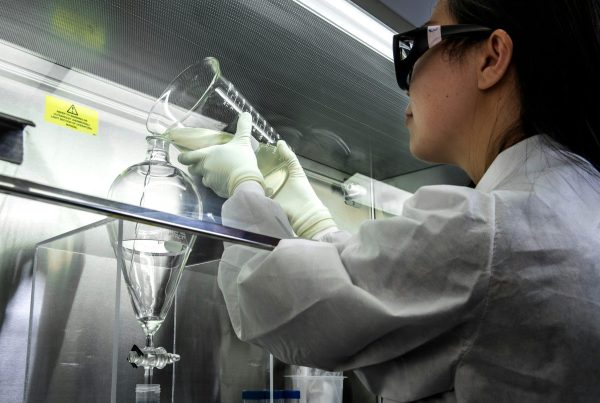Amsterdam Data Collective (ADC) starts investing in the development of decision support algorithms for precision dosing. Our first algorithm supports supplementation of levothyroxine in patients with auto-immune hypothyroidism (Hashimoto’s thyroiditis). We develop this model together with general practitioners of Radboud UMC.
Why precision dosing? It has significant impact on patients, caregivers and healthcare expenditures and it is a “perfect problem” for data science. Precision dosing is an issue that aligns perfectly with ADC’s data science capabilities and the firm’s ambitions to improve healthcare. Thomas Herngreen, Healthcare expert at ADC, explains.
The Impact of Precision Dosing is Significant
Precision dosing aims to improve the lives of both patients and physicians directly, while preventing the massive unnecessary costs due to sub-optimal pharmaceutical therapy.
Improving the Quality of Life for Patients
Individual patients may respond differently when the same dose of a medicine is administered. This response depends on different variables, such as patient characteristics, co-morbidity and co-medication. This means that a dose of a certain medicine can achieve a maximum therapeutical effect in one patient and be toxic in another. Precision dosing aims to find the dosage for any given individual that will result in an optimal therapeutical effect and prevents toxicity.
Improving the Quality of Work for Physicians
Finding the right medicine at the right dosage with optimal therapeutic effect and minimal toxicity can be time consuming and frustrating for both the patient and the caregiver. Developing decision support for precision dosing can significantly speed up this process.
Preventing Unnecessary Costs
The costs associated with sub-optimal pharmaceutical therapy are massive: around 15% of total US healthcare costs (Watanabe et al., 2018, Cost of Prescription Drug-Related Morbidity and Mortality). This number has been remarkably constant in recent years in a series of papers (1995: 8%, 2000: 13%, 2008: 13% ). Non-adherence is commonly seen as the main cause of patients’ problems with medication use. However, recent evidence shows that this is not the leading cause for treatment failures and failing clinical response. That is inadequate therapy, defined as “dose too low, different or additional drug needed, or wrong drug”, responsible of more than half of medication problems. Other important issues are non-adherence (~15%), adverse reaction (~15%), dose too high (~7%) and unnecessary therapy (~7%). By developing and implementing precision dosing algorithms we are starting to solve these problems and diminish associated costs.
Precision Dosing is a “Perfect Problem” for Data Science
With a wide range of possible drug-disease targets, the increasing availability of training data and the enthusiasm for applying decision support to clinical practice, precision dosing appears to be the “perfect problem” for data science.
Suitable Targets for Drug Disease
Precision dosing can be applied to a range of drug-disease targets. A useful framework has been developed for the selection and prioritization of these targets (Tyson et al, Frontiers in pharmacology, 2020). Important criteria are a narrow therapeutic index of the drug, a highly variable disease response to current drug regimen(s) and the availability of validated biomarkers. These biomarkers are essential in some drug-disease targets for training a precision dosing algorithm. Other endpoints for training the model are clinical response and stability in prescribed medications and dosages. Determining the endpoint is one of the big challenges in precision dosing, for which (among other reasons off course) close and early collaboration with clinicians is essential.
Increasingly More Data is Becoming Available
Developing an algorithm for a drug-disease target requires a large dataset for training purposes. Fortunately, the availability of data is increasing. A potential bottleneck is sharing this data with commercial companies due to privacy legislation. Our experience is that universities, which have many datasets available, are open to public-private partnerships to jointly develop these decision-support algorithms.
Enthusiasm for Supporting Technology in Clinical Practice is Increasing
The enthusiasm for the application of decision support in clinical practice is increasing. However, we must be careful in managing expectations, the risk of under-delivery is high; AI-initiatives can easily underdeliver in the heterogeneity of a real-world population with real-world data. This is harmful for trust and enthusiasm.
Developing a Precision Dosing Algorithm
This month we will start developing our first precision dosing algorithm in collaboration with the general practitioner department of the Radboud UMC. Our first algorithm is for levothyroxine supplementation in patients with auto-immune hypothyroidism (Hashimoto’s thyroiditis). This is a drug with a narrow therapeutic index for which it can be difficult to find the right dosage for individual patients.
For the development of our first algorithm, we collaborate intensively with general practitioners of Radboud UMC. We believe this is critical to achieving a solution in which results are reliable and applicable in daily practice.
Our next steps
The actual implementation in clinical practice requires user-friendly point-of-care software. We have a strong focus on working with end users in design sprints to create intuitive software. Together with the algorithm, we deliver a mock-up of the software to test with general practitioners. With promising results, we move on to the next phase of proving clinical superiority and CE-certification.
New drug disease targets
Our next target for drug disease is already in the early development. Do you want to be the next to collaborate with us, Please contact Thony Ruys or check our contact page.
What stage is your organisation in on its data-driven journey?
Discover your data maturity stage. Take our Data Maturity Assessment to find out and gain valuable insights into your organisation’s data practices.







